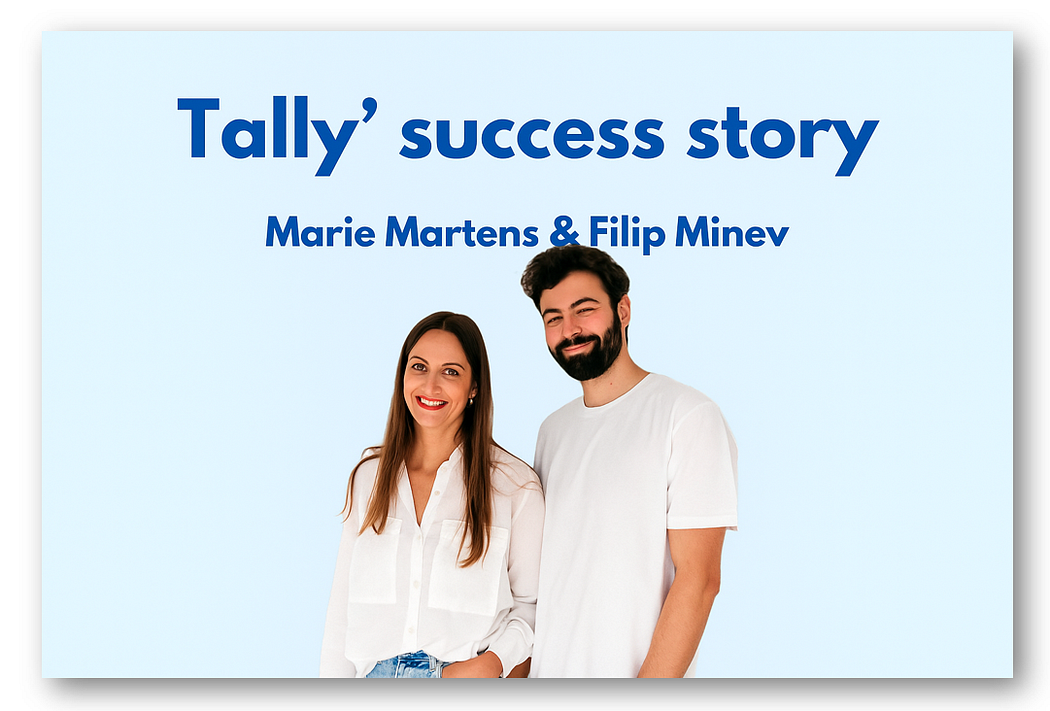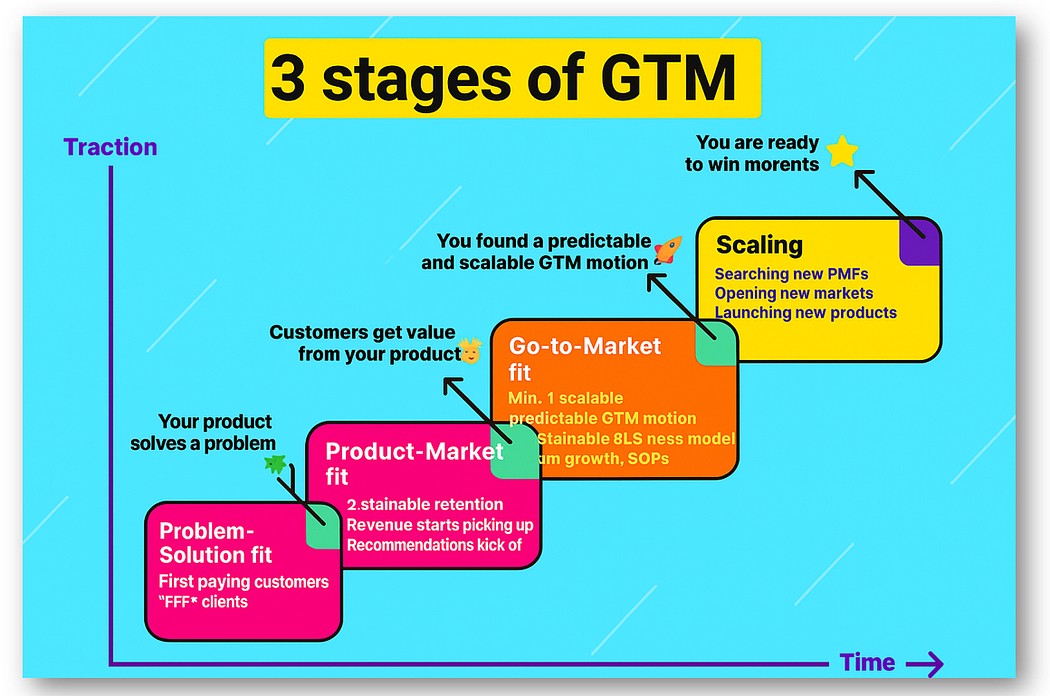Sonu Goswami Bootstrap success: tally’s $175k MRR playbook tips
Learn how Tally grew to $175K MRR with zero ads or funding. Tactical playbook with freemium strategy, SEO tactics & community building.

Marie Martens and Filip Minev’s travel startup died a slow, expensive death in 2020. They could’ve gone back to safe corporate jobs, but something made them want to try again.
This time would be different though. They’d stay lean, solve a problem they actually understood, and grow without burning through investor cash or ad budgets.
The result became Tally, a no-code form builder that reached $175K monthly recurring revenue by February 2025, entirely bootstrapped with a team of just eight people. Here’s exactly how they did it.
Learning From a $500K Mistake
Their first startup was a textbook example of how not to build a company. They spent 18 months and a bunch of investor money building something nobody wanted. Classic mistakes:
- Building for months without talking to real users
- Solving problems they’d never actually experienced
- Prioritizing fancy features over basic functionality
With Tally, Marie had a huge advantage: she was constantly creating surveys for user research and kept hitting those annoying response limits on every form tool she tried. She was genuinely pissed off at the existing options, which meant she actually understood what needed fixing.
Instead of spending months planning the perfect product, they threw together a basic version in a few weeks and shipped it.
Flipping the Freemium Game
Most form builders make their free plans basically unusable — tiny response limits, locked features, constant upgrade nagging. Tally went completely the other direction:
- Unlimited forms and responses for free users
- 99% of features unlocked from day one
- “Made with Tally” badge that actually helps them grow
Here’s what’s crazy about their numbers: only about 3% of people actually pay to remove that little badge. But here’s the kicker — each free form gets seen by around 47 people who notice that Tally branding. So every free user becomes a mini billboard generating leads without any ad spend.
Building in Public (But Actually Useful)
They didn’t just tweet vague startup inspiration. They shared real, transparent stuff that people could learn from:
- Weekly updates showing exactly what they built (with screenshots)
- Monthly revenue screenshots even when they were only making $200
- Direct polls
- “You asked, we built it” feature announcements
asking users what to build next
Their Slack community grew smart too. Instead of mass-inviting everyone, they personally reached out to users who gave detailed feedback. Made membership feel special rather than spammy.
By 2025, their 500-member Slack became like a focus group that would test and share new features before public launches.
Growing Without Ads
Zero ad budget. Here’s what actually drove growth:
Press enter or click to view image in full size

SEO That Converts
They skipped generic blog posts and created pages people were actually searching for:
- “Tally vs Typeform” comparisons
- “How to migrate from Typeform to Tally in 5 minutes”
- Feature-specific comparison content
These pages now drive about 40% of their organic traffic and convert way better than typical blog content.
Word-of-Mouth That Scales
Every free form has that Tally badge. When someone sees a professional form with Tally branding, they often check it out for themselves. Simple but effective.
Community Power
Their Slack members became unofficial advocates, sharing updates and even defending Tally in random online discussions without being asked.
The Four-Year Growth Story
Here’s how their revenue actually developed:
- March 2021:
- October 2021: H
- 2022: First $10K MRR month, added integrations with popular tools
- 2023: Reached $50K MRR, team grew to six people
- 2024: Crossed $100K in January, hit $150K by November
- February 2025: $175K MRR milestone
Product Hunt launch got them 1,000+ signups in days
it 11,000 users through word-of-mouth and early SEO
Not a hockey stick growth story — just steady, sustainable progress that actually made money at each stage.
Why Big Competitors Can’t Copy This
Large form companies struggle to match Tally’s approach for a few key reasons:
The Economics Don’t Work
With only eight employees, Tally can offer unlimited free usage and still turn a profit. Companies like Typeform have hundreds of people on payroll and investor pressure to hit big growth numbers. They literally can’t afford to give away unlimited free plans without bleeding money.
Community Loyalty
Tally users feel like they helped build the product through direct feedback. When Notion launched competing form features, existing Tally users actually defended them in social media threads without being prompted.
Speed Advantage
Direct user feedback means they can ship weekly updates based on real customer needs instead of committee decisions or market research.
If You’re Building Something Similar
Here’s what actually matters from their playbook:
- Learn specific lessons from past failures — don’t just say “fail fast,” figure out exactly what went wrong
- Turn free users into your marketing team through viral mechanics
- Build relationships slowly — their Slack took 2 years to hit 500 engaged members
- Create comparison content that matches what people actually search for
- Stay lean enough to offer what bigger competitors can’t afford
Why This Actually Works Long-Term
Here’s the thing most founders miss: Tally didn’t just get lucky with their numbers. They built something that can actually last.
While other form tools are burning investor cash trying to outspend each other on ads, Tally keeps their costs stupidly low. We’re talking 30% of revenue max. Marie still answers support emails herself — not because they can’t afford to hire someone, but because she learns something new from every frustrated user.
That’s how they keep shipping features people actually want instead of guessing what might work.
The best part? When the next recession hits or ad costs skyrocket, Tally will be fine. They’re not dependent on venture funding or paid acquisition that could dry up overnight.
Most bootstrapped founders give up too early because they think slow growth means they’re failing. But Tally shows that boring, steady growth often beats the hockey stick everyone talks about.
What’s working for your organic growth? Drop a comment — genuinely curious what’s been effective lately.
I help SaaS founders grow through content that shows real results, not just theory. Follow for weekly case studies of bootstrapped companies sharing their exact growth playbooks, revenue milestones, and the strategies that actually move the needle.

